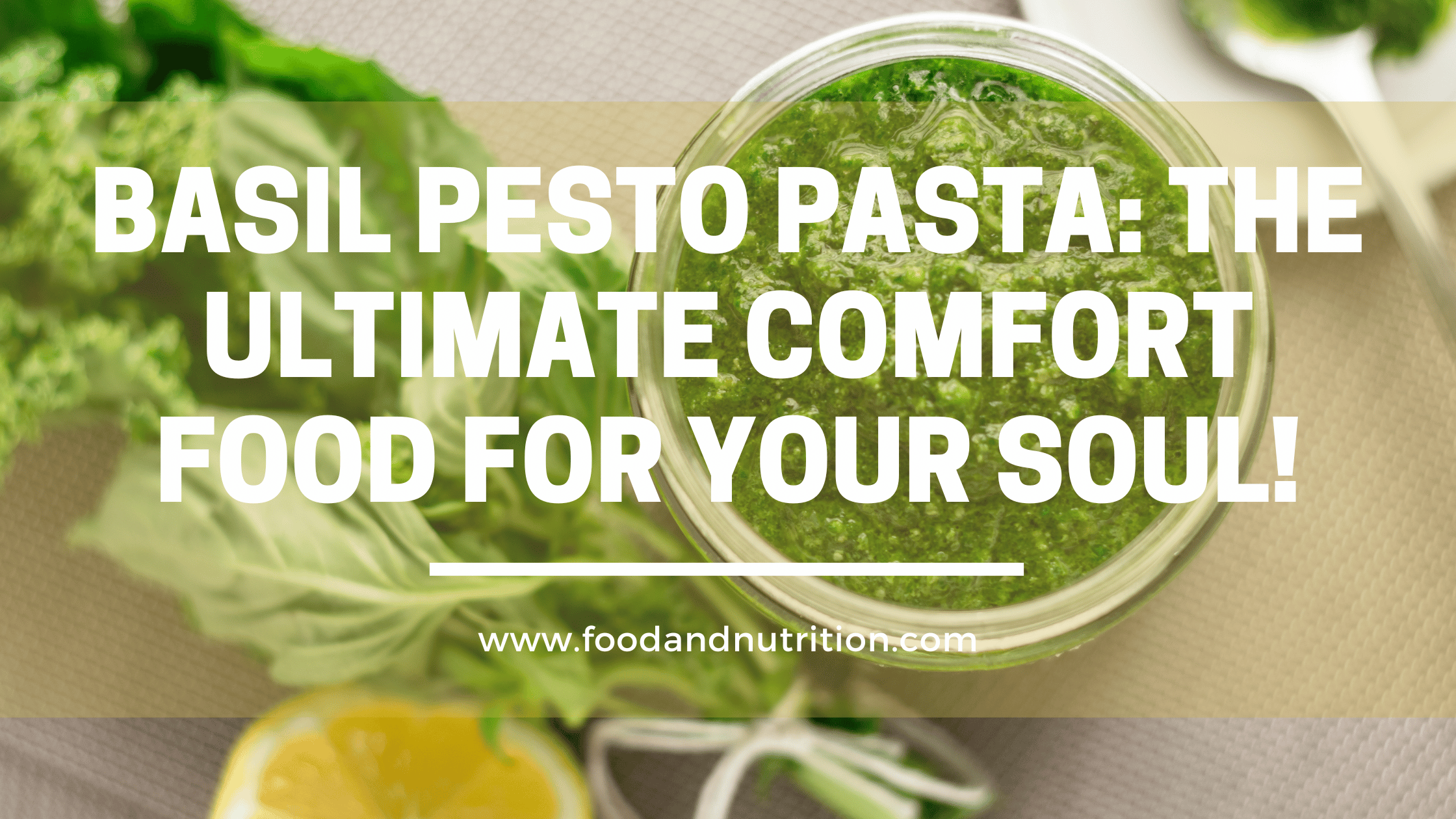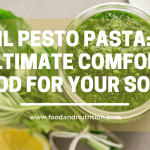Basil Pesto Pasta: The Ultimate Comfort Food for Your Soul!

Basil pesto pasta, with its vibrant green color and irresistible flavor, has captured the hearts and taste buds of pasta lovers around the world. This timeless dish is a perfect marriage of fresh basil, garlic, pine nuts, Parmesan cheese, and olive oil, creating a sauce that brings joy and comfort to any mealtime. In this blog post, we will dive into the history of basil pesto pasta, explore why it has become so popular, discuss its nutritious ingredients, and offer some creative serving ideas to elevate your dining experience.
The History of Basil Pesto Pasta
Originating in the coastal region of Liguria, Italy, basil pesto has a rich history that dates back centuries. The word “pesto” derives from the Italian word “pestare,” meaning to pound or crush, referring to the traditional method of making the sauce with a mortar and pestle. This authentic technique not only enhances the flavors but also creates a unique texture.
Traditionally, pesto sauce was made using just a few key ingredients: fresh basil leaves, garlic, pine nuts, Parmesan cheese, and olive oil. These ingredients were carefully combined and pounded together to create a vibrant and fragrant sauce. Over time, variations of the recipe emerged, incorporating different herbs, nuts, and cheeses, reflecting the diverse culinary traditions of various regions.
Why Basil Pesto Pasta is Popular
Basil pesto pasta has gained immense popularity worldwide, and for good reason. Its appeal lies in its simplicity and versatility. The bright and fresh flavors of basil, combined with the rich and nutty notes of Parmesan cheese and pine nuts, create a harmonious blend that tantalizes the taste buds. The creamy texture of the sauce coats the pasta, providing a comforting and satisfying experience.
Moreover, basil pesto pasta is incredibly adaptable, making it suitable for a wide range of dietary preferences. It can be enjoyed by vegetarians and vegans, and gluten-free pasta options are readily available. Its universal appeal ensures that it can be relished by people of all ages, making it a popular choice for families and gatherings.
Basil Pesto Pasta
Ingredients
- 1 pound of pasta
- 2 cups of fresh basil leaves
- 3 cloves of garlic peeled
- 1/2 cup of pine nuts
- 1/2 cup of grated Parmesan cheese
- 1/2 cup of olive oil
- Salt and pepper to taste
Instructions
- Cook the pasta according to the package directions.
- Meanwhile, prepare the pesto sauce. In a food processor or blender, combine the fresh basil leaves, peeled garlic cloves, pine nuts, grated Parmesan cheese, and olive oil. Process until the mixture reaches a smooth consistency.
- Once the pasta is cooked, drain it and return it to the pot.
- Add the prepared pesto sauce to the pot with the pasta. Stir well, ensuring that the pasta is evenly coated with the sauce.
- Season with salt and pepper according to your taste preferences.
- Serve the basil pesto pasta hot, and if desired, garnish with additional Parmesan cheese and fresh basil leaves.
Notes
Nutrition in Basil Pesto Pasta
Aside from its delightful taste, basil pesto pasta also offers several nutritional benefits. Basil, the star ingredient in pesto sauce, is a powerhouse of vitamins and minerals. It is particularly rich in vitamins A and K, which support eye health, bone health, and blood clotting. Basil also contains antioxidants that help fight oxidative stress and reduce the risk of chronic diseases.
The other components of the pesto sauce contribute to its nutritional profile. Garlic, with its antibacterial properties, aids in maintaining a healthy immune system. Pine nuts provide protein and heart-healthy fats, while Parmesan cheese offers a good dose of calcium and protein. Combined with whole wheat or gluten-free pasta options, basil pesto pasta can be a balanced meal that satisfies both your taste buds and nutritional needs.
Serving Ideas to Elevate Your Basil Pesto Pasta
While basil pesto pasta is delicious on its own, it also welcomes creative variations and complementary ingredients. Consider adding cherry tomatoes, roasted vegetables, grilled chicken, or shrimp to enhance the flavors and textures. You can even experiment with different pasta shapes, such as fusilli or farfalle, to create visually appealing dishes.
For a refreshing twist, incorporate additional fresh herbs like parsley or cilantro into the pesto sauce. This will infuse new dimensions of flavor into the dish and offer a unique sensory experience. To add a touch of creaminess, you can mix a dollop of ricotta cheese into the sauce or sprinkle toasted breadcrumbs for added texture.

Conclusion
Basil pesto pasta is a culinary gem that has stood the test of time. Its rich history, coupled with its unmatched flavors and versatility, has propelled it to international fame. The combination of fresh basil, garlic, pine nuts, Parmesan cheese, and olive oil results in a sauce that brings a burst of freshness and satisfaction to every bite.
Whether you are looking for a quick and easy weeknight meal or an impressive dish to serve at a gathering, basil pesto pasta is an excellent choice. Its nutritional benefits, adaptability to various dietary preferences, and endless serving possibilities make it a go-to comfort food for countless individuals.
So, why not indulge in a bowl of basil pesto pasta today? Let the vibrant colors and aromatic flavors transport you to the sunny hills of Italy, where this timeless classic first captured hearts and continues to delight the palate.
- Unlock Classic Marinara Sauce: A Flavorful & Nutritious Guide
- Embracing Summer: The Ultimate Watermelon Feta Salad with Tomatoes & Olives
- Rediscovering Lebanese Salad: A Refreshing Delight with a Rich Heritage
- Eating Your Way to Healthy Blood Pressure: A Guide to Lowering Hypertension
- Perfect Roasted Leg of Lamb: A Timeless Delight for Your Table
- Romesco Sauce: A Flavorful Spanish Delight That Elevates Every Dish
